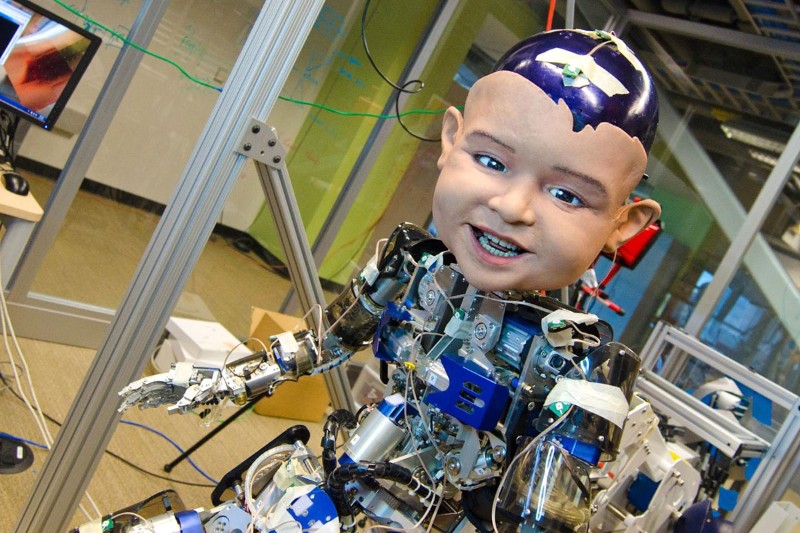Giant baby faced robot used to study infant expressions
From past many years, psychologists and other scientists have been trying to understand “smile interactions” between babies and their mothers, but none have gained much success.
You will be surprised to know that babies are as clever as comedians in bringing happiness and exert minimum amount of effort to make it happen.
Researchers at the University of California, San Diego have developed a robotic infant to test a hypothesis that babies can (and regularly do) manipulate their mothers into smiling on command.
Using the statistical analysis from this initial study, the team then programmed this mechanical monstrosity, named Diego-San (what, was “nightmare fuel” already taken?), to smile like biological babies do.
Ruvolo, Messinger, and Movellan believe Diego-San could be used to study behavior of developmentally challenged children.
“Our methods are agnostic to this question”.
Funded by the National Science Foundation, the study is part of a program that uses robots to get fresh insight into human development.
Researchers say the new findings could pave the way for a better understanding of non-verbal children and adults, such as those with autism. This methodology helps scientists design and program robots to perform a behavior based on specific goals.
Despite the small sample size, the findings were statistically strong, according to Movellan.
After analysing their data, the team found that 11 out of the 13 babies in the study showed clear signs of intentional smiling. Diego San interacted with 32 UC San Diego undergraduates individually during three-minute sessions where it displayed one of four different behaviors. Researchers carefully observed the interaction between the mother and the infant and determined four goals the mother-infant pair tries to achieve: maximizing the time of simultaneous smiling, maximizing mother smiling, maximizing infant smiling, and nobody smiling. They allowed Diego-San to interact with dozens of undergraduate students.
“What makes our study unique is that previous approaches to studying infant-parent interaction essentially describe patterns”, said co-author Dan Messinger, of the University of Miami. “Here we find that infants have their own goals in the interaction, even before four months of age”.








